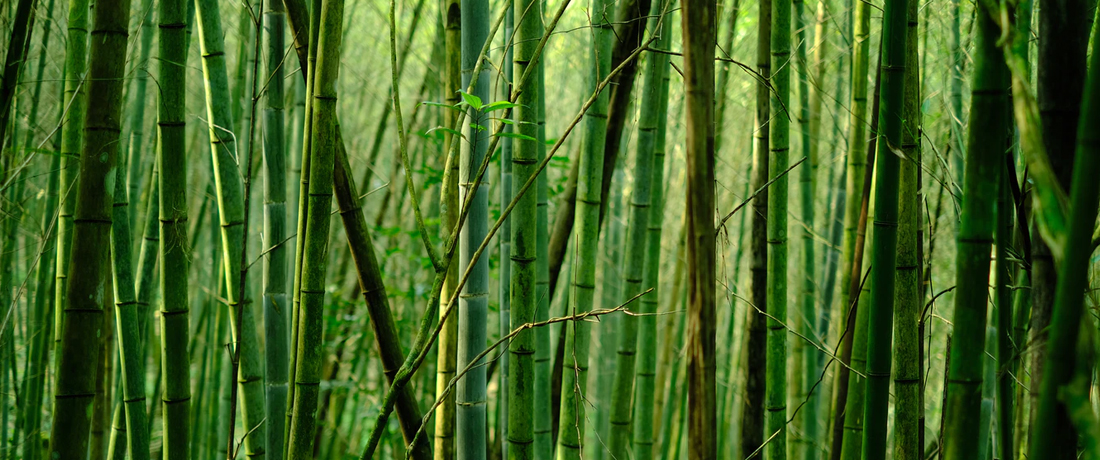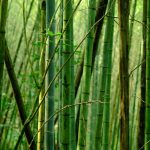
As time goes on, land and space is becoming more valuable. House blocks are reducing in size and buildings are taking up more and more of the average backyard. Not only are the buildings getting closer, but more and more of them are going up, adding a second story is becoming more common. Most people do not want to be reminded of the increasing proximity of their neighbours. They want to screen them out.
Choosing a Suitable Screen
There are many options when creating a screen, but before you rush out and get the first thing you can think of, there are a few questions you should ask yourself.
How high do I need the screen to be?
How dense do I need the screen to be?
Do I want the screen to cast shade all year round?
How many hours of sun does the area get during the day?
What are the growing conditions like?
How quickly do I need the screen?
Your answers to these questions will help to narrow your choices.
Shrubs and Trees
Many species of trees, shrubs and climbers make excellent screens. Usually mass plantings of the same species are used, although screens may use a mix of different plants.
Light
Consider how much light you want to screen out or if you want to let the light through in winter. Then consider if you want an evergreen or a deciduous screen. At this point you should consider how dark an area is during the winter months if you use a dense evergreen screen.
There are many different foliage types and growth habits.
 Important note about plant availability. Important note about plant availability.There are hundreds of factsheets on our website provided for your information. Not all plants will be available at all times throughout the year. To confirm availability please call (03) 8850 3030 and ask for the nursery. |
Foliage types
Large leaves + long internodes = intermediate screen eg. Pyrus Capital
Small leaves + long internode spaces = sparse screen eg. Michelia Scented Pearl
Large Leaves + short internode spaces = dense screen eg. Viburnum odoratissimum
Small leaves + short internode spaces = dense screen eg. Pittosporum Screen Master
* An internode is the length of stem between the leaves or buds.
Growth habit may include the following;
Fastigiate (Upright branching, narrow) eg. Pencil Pine
Upright, eg. Callistemon Kings Park Special
Spreading or broad, eg. Fejoa sellowiana
Open, eg. Alogyne heuglii (Native Hibiscus)
Weeping, eg. Agonis flexuosa.
Pruning may be used to increase the density of many screening plants, and is recommended in the management of screens, particularly fast growing species.
Height
It is important to determine the height that the screen needs to be to block out a view, to avoid planting inappropriately large plants in a confined space. To work out the height that the screen needs to be, follow the diagram below. This illustrates that if the building next door is 6m high, you do not necessarily need a screen that is 6m high.
Spacing
The width of the screen may also be an issue, especially as many screens are between houses, fences and pathways. Always try to make any garden beds on fence lines as wide as possible, as this will give you more choice when it comes to selecting suitable screening plants. Plants that get much wider than you allow for will mean a lot of trimming during the year. Please take into consideration the fact that healthy plants need a substantial root system to grow. If the space is very narrow, climbers or non – living screens may be more suitable than trees or shrubs.
Climbers
There are many climbers suitable for using as a screen. Many of these will need support such as lattice or wire to cling on to as they climb. The strength and size of the support required depends on the growth habit of the climber, with vigorous climbers requiring more solid support. It is important to choose a climber that is a suitable mature size for the space allocated. There are some climbers that are self – clinging and will attach themselves to brick or timber surfaces. These can usually be clipped back to the fence or wall, which is useful in confined spaces.
Walls and Man Made Screens
There are many materials that may be used to create a screen of different sizes. Obviously most councils will have restrictions on the size and sometimes the materials used to create a screen or wall, so it best to check before you start construction.
There are many already constructed roll out products available, including brush, bamboo, fern, tea tree and willow. Also sheets of timber lattice and fence extensions may be used.
If you are feeling creative, the sky is the limit as to the materials you can use. Even using old branches or try combining some recycled materials for a truly individual screen.
Decorative or artistic screens can be used to combine both the sculptural element with a practical purpose. These sorts of screens make excellent dividers in a garden and can be used to screen off compost and rubbish bins, clothes lines and sheds.
Hedging
Hedges are usually a more formal type of screen or living wall. Hedges are usually of one type of plant, clipped into a shape, usually square, but other shapes may also be used.
There are many plants suitable for choosing to make into a hedge. Generally, they should have a short internode space, as these will give a more solid hedge when pruned and maintained regularly.
The spacing of plants within a hedge is very close, so that the branches when fully grown, ‘knit together’ to form a continuous line. First determine the width of the individual plant at maturity. Then plant out half to one third less than this distance apart, to achieve the correct spacing.
Because the spacing for the plants is so close, there will be much root competition for the available nutrients and water. Therefore, hedges require regular fertilising and watering, as well as adequate preparation of the planting site from the start. Work the entire soil area where the hedge will be, breaking up the soil and adding organic matter if appropriate. After planting remember to mulch well and keep the area well watered during establishment of the hedge. Generally, the closer the plants, there will be more root competition and the hedge tends to be shorter.
Pruning of your hedge will depend on the speed that the plants grow. Fast growing plants will require regular pruning at a shorter interval. Prune the hedge plants right from the start both top and sides, rather than leaving the hedge to get to the required height before pruning. This will maintain a dense hedge with growth to the ground. The hedge should be pruned so that it tapers towards the top of the hedge, allowing light to get to the bottom of the hedge and keeping the hedge dense to the ground.
Legal Considerations
It is understandable that you may want to block out the view of your neighbour, but before you rush out and get the biggest and fastest growing trees you can find, you should note that you do have certain legal responsibilities.
– The neighbour can trim the hedge or screen straight up from the fence or boundary line. They may also return the clippings to the owners’ side.
– The ownership of the plant is held by the person on who’s property the trunk is.
– If you ever have any doubts, it is always best to be on the safe side and contact your Local Council for further information.
 Important note about plant availability. Important note about plant availability.There are hundreds of factsheets on our website provided for your information. Not all plants will be available at all times throughout the year. To confirm availability please call (03) 8850 3030 and ask for the nursery. |
Screening Plant Suggestions
Here are a few ideas for some screening plants for different areas.
Screening in a Shady Area |
||||
|
Plant |
Screen Height |
Spacing |
Density |
Years to maturity (approx) |
|
Camellia sasanqua cvs. |
2 to 5m |
1 – 1.5m |
Light to medium |
5 |
|
Aucuba japonica |
2 to 3m |
1.2 – 1.5m |
Dense |
8 |
|
Japanese Maple |
6m |
2 – 3m |
Light to medium |
6 |
|
Grevillea longistyla |
3 – 4m |
1.2m |
Medium |
4 |
|
Nandina domestica |
1.5 – 2m |
0.6m |
Medium to Dense |
5 |
Down the Side of the House (Between a Wall and a Fence) |
||||
|
Plant |
Screen Height |
Spacing |
Density |
Years to maturity (approx) |
|
Trachelospermum jasminoides |
4 x 2m |
1 – 2m |
Dense |
4 |
|
Cordyline stricta |
1.8m |
1m |
Medium |
5 |
|
Aphanopetalum resinofolium(Sun Vine) |
4 x 4m |
1 – 2m |
Medium to Dense |
4 |
|
Clumping Bamboo |
1.5 – 6m |
1.5m |
Medium to Dense |
8 – 10 |
|
Michelia ‘Scented Pearl’ |
2.5 – 3m |
1.2 – 2m |
Light to Medium |
6 |
Screen in a Hurry |
||||
|
Plant |
Screen Height |
Spacing |
Density |
Years to maturity (approx) |
|
Pittosporum ‘Screen Master’ |
3 – 5m |
1.2 – 1.5m |
Dense |
4 |
|
Lily Pilly Spp. |
2 – 10m |
1 – 2m |
Dense |
5 |
|
Photinia glabra ‘Rubra’ |
4 – 5m |
1.2 – 1.5m |
Dense |
4 |
|
Hardenbergia violacea |
5m x 3m |
1.5 – 2m |
Medium to Dense |
2 |
|
Passion Fruit |
3m x 5m |
2 – 3m |
Dense |
1 |
|
Grevillea Spp. |
1.5 – 5m |
1.2 – 2m |
Medium |
3 |
|
Leptospermum petersonii |
5 – 7m |
1.2 – 2m |
Medium to Dense |
5 |
|
Myrtus communis |
3m |
1 – 1.5m |
Dense |
4 |
Beside the Drive |
||||
|
Plant |
Screen Height |
Spacing |
Density |
Years to maturity (approx) |
|
Pyrus Capital |
8m |
2 – 3m |
Light to Medium |
6 |
|
Juniperus Skyrocket |
8m |
0.5 – 1m |
Medium to Dense |
5 |
|
Ballerina Apples |
6m |
1m |
Light to Medium |
6 |
|
Syzygium australe ‘Hinterland Gold’ |
5m |
0.75 – 1m |
Dense |
3 |
|
Callistemon ‘Western Glory’ |
3m |
1.2 – 1.5m |
Medium |
4 |
|
Pittosporum ‘Green Pillar’ |
3m |
1 – 1.2m |
Dense |
4 |

